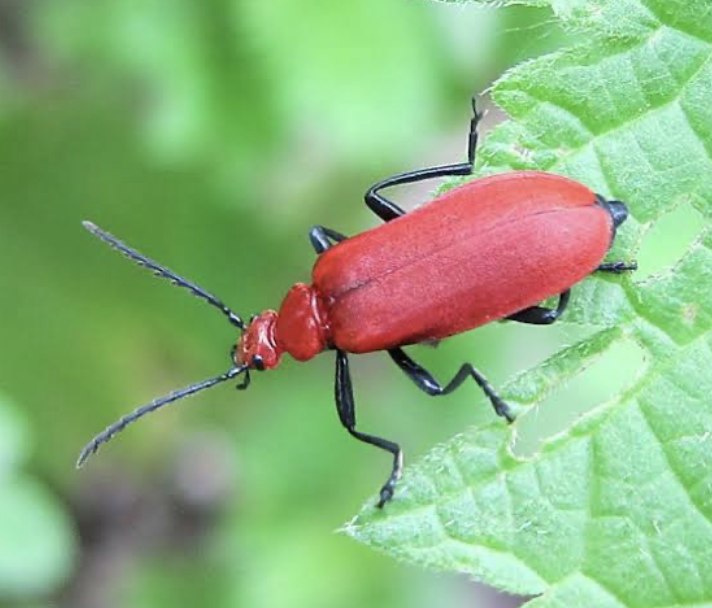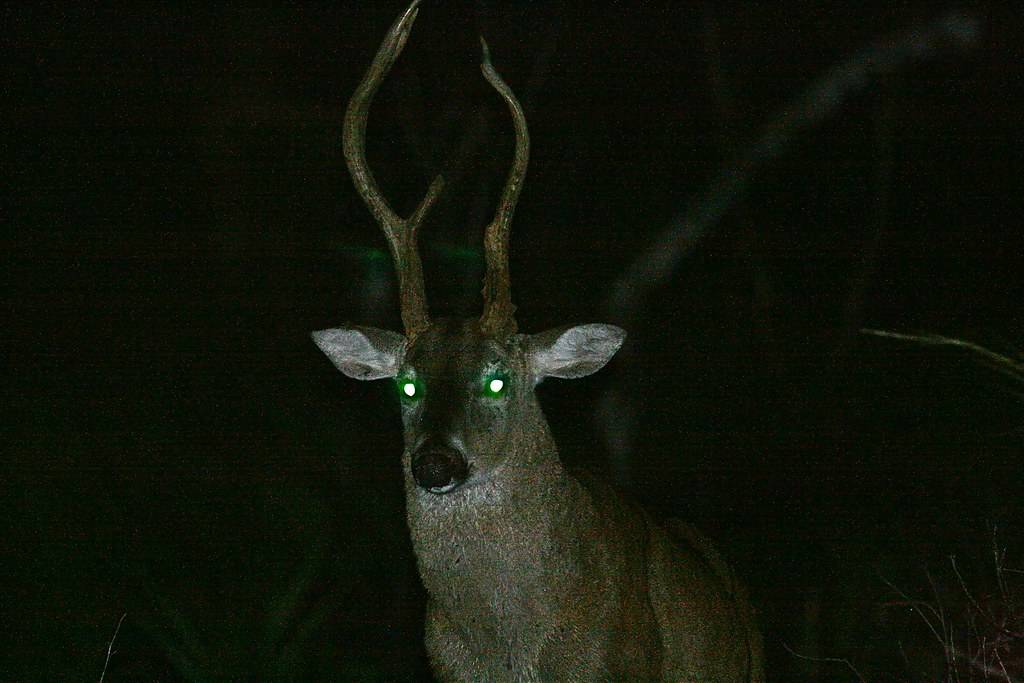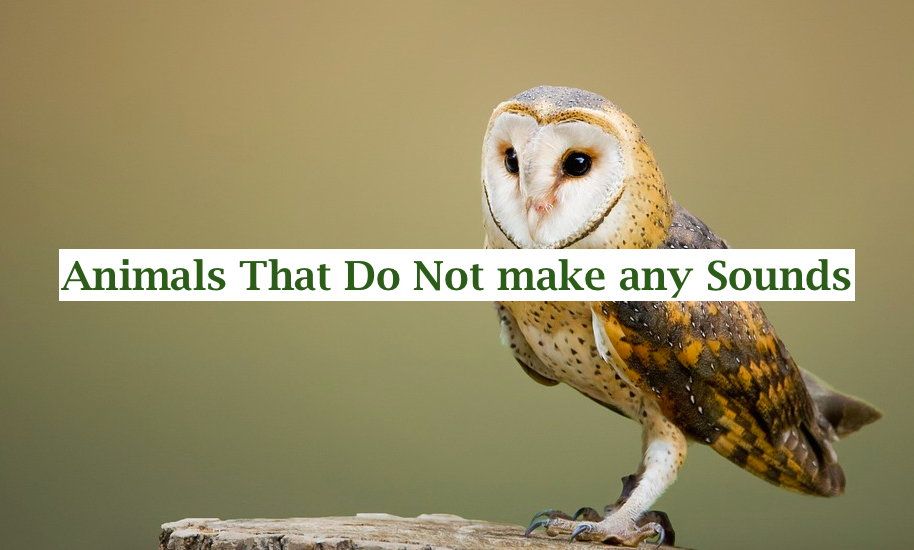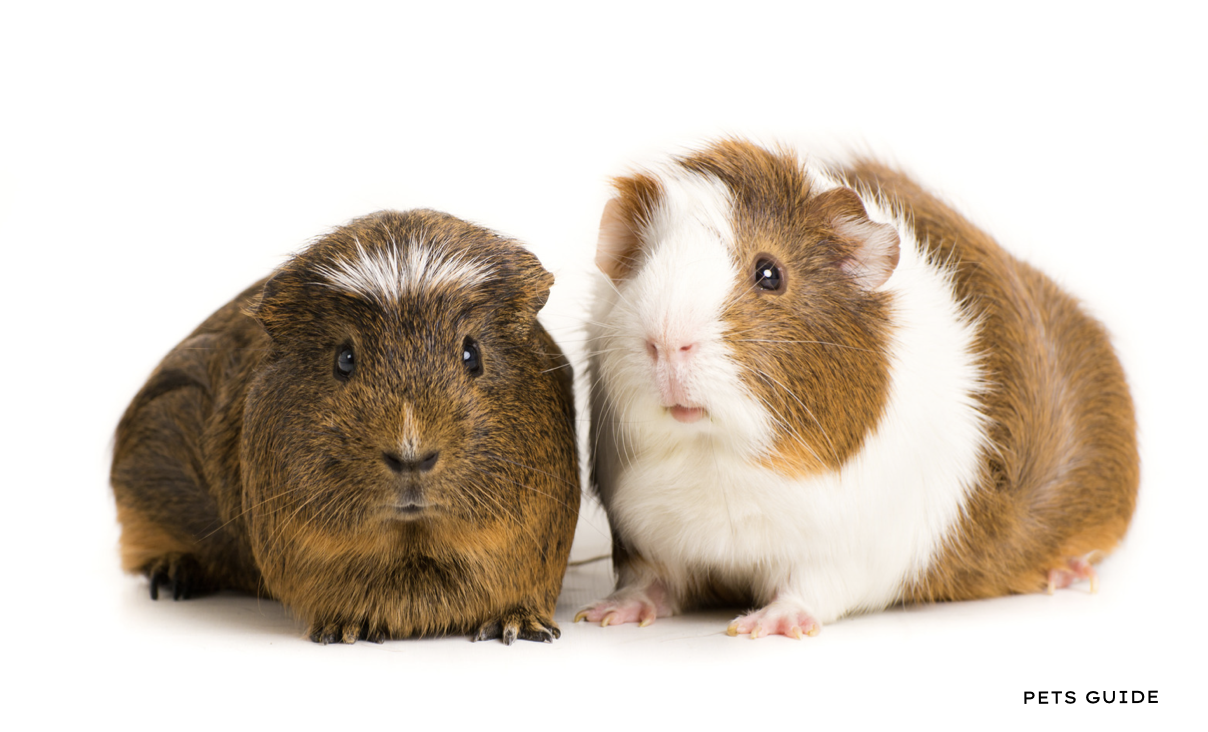Animals
10 Red Beetles and Bugs You Should Know: A Colorful Guide to Insects

10 Red Beetles and Bugs You Should Know: A Colorful Guide to Insects
Have you ever marveled at the vibrant world of insects, especially the red beetles and bugs? These tiny creatures are not just fascinating to observe but are also crucial for our ecosystem.
In this comprehensive guide, we will explore 10 striking red beetles and bugs, delving into their unique characteristics, habitats, and roles in nature. Whether you’re an insect enthusiast, a curious learner, or someone who appreciates the beauty of nature, this article will offer a colorful insight into the world of these remarkable insects.
So, let’s embark on this entomological journey and discover the amazing world of red beetles and bugs!
1. The Ladybird Beetle: Nature’s Aphid Predator

Ladybird beetles, more popularly known as ladybugs, are celebrated for their distinctive bright red shells adorned with black spots. These small but striking beetles are a familiar sight in gardens and are highly valued by gardeners for their role in controlling pests.
Their primary diet consists of aphids, tiny insects that can be detrimental to plant health. By feeding on these pests, ladybugs play a crucial role in maintaining the balance of garden ecosystems.
Their natural predation on aphids makes ladybugs an environmentally friendly solution for pest control, reducing the need for chemical pesticides. This not only benefits the health of plants but also supports overall ecological well-being by minimizing the introduction of harmful substances into the environment.
The presence of ladybugs in a garden is often an indicator of a healthy, thriving plant ecosystem. Their role extends beyond pest control, as they contribute to biodiversity and help sustain the natural cycles of garden ecosystems.
The bright coloration of ladybugs also serves as a warning to predators, signaling their unpalatability. This aspect of their appearance, combined with their ecological importance, makes ladybugs a beloved and respected insect among gardeners, naturalists, and scientists alike.
Their contribution to natural pest management and the aesthetic appeal they add to gardens and natural settings underscore their significance in both ecological balance and human appreciation of nature.
2. The Red Lily Beetle: A Gardener’s Challenge

This vibrant red beetle, known for its voracious appetite for lilies, poses a significant challenge for gardeners and horticulturists. Its striking appearance belies the potential damage it can cause to lily plants.
The beetle’s lifecycle, from egg to adult, is typically centered around lily plants, where it feeds on the leaves, stems, and even the flower buds. This feeding habit can severely impact the health and aesthetic value of the lilies, leading to weakened plants or even complete destruction if left unchecked.
Understanding the lifecycle of this beetle is crucial for effective garden management. Knowing when and how they reproduce, their developmental stages, and their feeding patterns can help in timing preventive and control measures more effectively.
For instance, identifying and removing eggs or larvae can significantly reduce the beetle population.
Equally important is knowledge about the beetle’s natural predators. Certain birds, insects, or even other beetles may feed on these lily beetles, providing a natural form of pest control. Encouraging these natural predators in the garden can help keep the beetle population in check.
Integrating this understanding into garden management strategies can significantly reduce the impact of these beetles. This might include physical removal, encouraging natural predators, or using environmentally friendly pest control methods.
Managing the vibrant red beetle effectively not only protects lily plants but also contributes to maintaining a healthy and diverse garden ecosystem.
3. The Scarlet Lycid Beetle: A Flash of Color

The Scarlet Lycid Beetle, notable for its striking fiery red coloration, is a distinctive presence in woodland environments. This beetle species is commonly observed amid the leaf litter and decomposing logs found in forested areas.
It plays a crucial ecological role, particularly in the process of breaking down and decomposing dead trees. This not only aids in nutrient recycling within the forest ecosystem but also contributes to the maintenance of a healthy and balanced environment.
The vibrant red of the Scarlet Lycid Beetle serves as a visual hallmark, making it easily recognizable and a subject of interest for both entomologists and nature enthusiasts.
4. The Blood-Red Glider: An Aerial Acrobat

This beetle, renowned for its vivid red coloration, captivates onlookers with its remarkable agility in flight. Its vibrant hue is a standout feature, drawing the eye with its striking intensity.
These beetles are particularly enchanting when observed in the warm months, often seen flitting gracefully among flowers and grasses in meadows.
Their presence adds a touch of dynamic color and life to these natural landscapes, making summer strolls through meadows a visually delightful experience.
The agile flight patterns of these beetles, combined with their bright color, not only make them a joy to observe but also highlight their role in the ecosystem, contributing to the biodiversity and natural beauty of these outdoor spaces.
5. The Cardinal Beetle: A Misunderstood Beauty

The Cardinal Beetle, frequently misidentified as a harmful insect, is in fact a benign and ecologically beneficial species. Its striking appearance can lead to misconceptions about its nature, but contrary to common belief, it poses no threat to humans or crops.
Instead, this beetle plays a pivotal role in maintaining ecological balance by preying on other insects. Its diet primarily consists of smaller, often pestiferous insects, making it a natural form of pest control.
This predatory behavior helps regulate insect populations, ensuring a healthier balance within various ecosystems.
The presence of the Cardinal Beetle in natural habitats underscores its importance as a contributor to biodiversity and as an integral part of the food chain, demonstrating the complex interdependencies among different species in the environment.
6. The Red Harlequin Bug: A Pest or a Pollinator?

The Red Harlequin Bug, easily identifiable by its striking red and black pattern, has garnered scientific interest due to its unique dual role in various ecosystems.
On one hand, this bug is known to be a pest, feeding on certain plants and potentially causing agricultural damage. Its feeding habits can lead to reduced crop yields and affect the health of ornamental plants.
On the other hand, the Red Harlequin Bug also acts as a pollinator, contributing to the reproductive processes of various plants. This dual nature of being both detrimental and beneficial makes it a fascinating subject for ecological studies.
Researchers are particularly interested in understanding how the Red Harlequin Bug balances these roles and the impact it has on different ecosystems.
Studies focus on its feeding behavior, pollination activities, and the implications of its presence in specific environments. Understanding the behavior and ecological impact of the Red Harlequin Bug is essential for developing effective management strategies in agriculture and conservation efforts.
This knowledge helps in making informed decisions regarding pest control while also considering the bug’s role in supporting the health and diversity of ecosystems.
7. The Ruby Tiger Moth: Not Just a Pretty Face
Despite not being a beetle, the Ruby Tiger Moth is noteworthy for its magnificent red wings and significant role in the process of pollination. This moth, with its vibrant ruby-colored wings, adds a splash of color and beauty to the environments it inhabits.
The Ruby Tiger Moth is more than just a visual delight; it plays a crucial ecological role as a pollinator. As it flutters from flower to flower, it aids in the transfer of pollen, facilitating the reproductive cycle of various plants.
This pollination process is vital for the health of ecosystems, ensuring plant diversity and the continuation of floral growth. The Ruby Tiger Moth’s contribution to this process highlights the interconnectedness of different species within an ecosystem.
Its role in pollination underscores the importance of conserving diverse insect populations, as they provide essential services that support ecological balance and biodiversity.
The moth’s striking appearance and ecological significance make it a subject of interest not only for its beauty but also for its role in sustaining the natural world.
8. The Fire-Colored Beetle: A Chemical Wonder

These beetles are distinguished by their unique chemical defenses, a characteristic that has made them a subject of great interest for scientific research.
Their ability to produce and release chemicals as a means of defense against predators is a remarkable adaptation. These chemicals can be in the form of noxious sprays or secretions that deter predators, providing the beetles with an effective means of protection in their natural habitats.
Scientists study these chemical defenses to understand the evolutionary biology and ecological interactions of these beetles.
Research delves into the composition of the chemicals, how these defenses are developed and deployed, and the impact they have on potential predators and the environment. This study is not only relevant for understanding the beetles’ survival strategies but also has broader implications in the fields of biochemistry and ecology.
Furthermore, understanding these chemical defenses can lead to potential applications in other areas, such as the development of natural pest repellents or new compounds for scientific and medical research.
The study of these beetles’ chemical defenses exemplifies the intricate ways in which organisms adapt to their environment and how these adaptations can offer insights into the complexities of nature.
9. The Red Velvet Mite: Tiny but Mighty
Despite their diminutive stature, these mites are key players in maintaining soil health and fertility, a fact that belies their small size.
These tiny organisms are integral components of the soil ecosystem, where they contribute significantly to the decomposition of organic matter.
By breaking down fallen leaves, dead plants, and other organic debris, these mites help in recycling nutrients back into the soil. This process enriches the soil, enhancing its fertility and making it more conducive to plant growth.
Their activity also aids in aerating the soil and improving its structure, which is essential for root growth and water retention.
The presence of these mites in the soil is a crucial indicator of a healthy, balanced ecosystem. They play a role in the natural cycle of nutrient uptake and release, ensuring that essential elements are available for plant growth.
Moreover, these mites are part of a larger food web in the soil, serving as food for other organisms and thus maintaining the ecological balance. Their role in soil health and fertility highlights the importance of even the smallest creatures in the ecosystem.
Understanding and preserving these mites is crucial for sustainable agriculture and the overall health of the environment, as they contribute significantly to the vitality and productivity of the soil.
10. The Crimson Weevil: An Artist of Nature
Crimson Weevils stand out not only for their aesthetic appeal, with their artistic patterns, but also for their significant impact on forest ecosystems.
These weevils, adorned with vibrant crimson hues and intricate designs, add a visual richness to the environments they inhabit. Their distinctive appearance makes them a subject of fascination for both entomologists and nature enthusiasts.
Beyond their visual allure, Crimson Weevils play a vital role in forest ecosystems. They are often involved in the decomposition process, breaking down plant material, which is crucial for nutrient cycling within the forest.
This decomposition aids in enriching the soil and promoting new plant growth, thereby sustaining the health and diversity of the forest.
However, in some cases, these weevils can also have a detrimental impact, especially if they target live trees or become overly abundant, potentially leading to forest damage.
This dual role of Crimson Weevils as both contributors to and, at times, challengers of forest health, makes them a significant focus of ecological study.
Understanding the behavior, lifecycle, and ecological impact of Crimson Weevils is essential for forest management and conservation efforts.
Such knowledge helps in balancing their positive contributions to ecosystem processes with the need to mitigate any negative effects they may have on forest health. Thus, Crimson Weevils are not only admired for their striking appearance but are also recognized for their complex role in forest ecosystems.
Conclusion
Our exploration of these 10 red beetles and bugs reveals the incredible diversity and importance of these insects in our world. From the Ladybird Beetle to the Crimson Weevil, each species plays a vital role in the ecological balance.
As we learn more about them, we develop a deeper appreciation for their contribution to our environment. Remember, the next time you spot one of these red wonders, you’re witnessing a small but significant part of nature’s intricate tapestry.
FAQs
What role do red beetles and bugs play in the ecosystem?
Red beetles and bugs play various roles, including pollination, pest control, and decomposition.
Are red beetles harmful to humans?
Most red beetles are harmless to humans, though some can be pests in gardens.
How can I attract beneficial red beetles to my garden?
Planting a variety of plants and avoiding pesticides can attract beneficial beetles like ladybugs.
What is the most common red beetle found in gardens?
The Ladybird Beetle is one of the most common and beneficial beetles found in gardens.
Can red beetles be a sign of an unhealthy garden?
Some, like the Red Lily Beetle, may indicate specific plant infestations.
Do red beetles have any natural predators?
Yes, birds, spiders, and other insects are natural predators of many red beetles.
How can I differentiate between beneficial and harmful red beetles?
Research and observing their behavior and diet can help differentiate between beneficial and harmful species.
Verified Source References
Animals
The Ethics of Animal Testing: Navigating the Complex Intersection of Science and Compassion

Animal testing has long been a contentious issue, sparking debates that span scientific, ethical, and philosophical domains. On one hand, animal testing has played a crucial role in advancing medical research, leading to breakthroughs in the treatment of diseases, the development of new drugs, and the understanding of biological processes.
On the other hand, the use of animals in experiments raises significant ethical concerns about animal welfare, the moral implications of causing suffering, and the validity of extrapolating results from animals to humans.
This article delves into the ethics of animal testing, exploring the arguments for and against it, the current state of regulations, and the ongoing quest to find alternatives that balance scientific progress with compassion for animals.
The Role of Animal Testing in Science
Historical Contributions
Animal testing has been instrumental in numerous scientific advancements. For instance, the development of vaccines for diseases such as polio and rabies relied heavily on animal experiments. Similarly, the discovery of insulin and the development of antibiotics were made possible through research involving animals.
Current Applications
Today, animal testing is used in a variety of fields, including:
- Medical Research: Testing new drugs, treatments, and surgical procedures.
- Toxicology: Assessing the safety of chemicals, cosmetics, and other products.
- Basic Science: Understanding biological processes and disease mechanisms.
Case Study: The Development of the Polio Vaccine
The development of the polio vaccine in the mid-20th century is a prime example of the importance of animal testing. Researchers used monkeys and mice to test the safety and efficacy of the vaccine before it was administered to humans, leading to the eventual eradication of polio in many parts of the world.
The Ethical Debate
Arguments in Favor of Animal Testing
Arguments Against Animal Testing
Case Study: The Thalidomide Tragedy
The thalidomide tragedy is a stark example of the limitations of animal testing. Thalidomide was tested on animals and deemed safe, but it caused thousands of birth defects in humans. This case highlights the potential for discrepancies between animal and human responses to drugs.
Current Regulations and Ethical Guidelines
International and National Regulations
Animal testing is subject to regulations and guidelines that vary by country. In the United States, the Animal Welfare Act and the Public Health Service Policy on Humane Care and Use of Laboratory Animals provide a framework for the ethical treatment of animals in research. The European Union has implemented the Directive 2010/63/EU, which sets strict standards for animal testing and promotes the use of alternatives.
The 3Rs Principle
The 3Rs principle—Replacement, Reduction, and Refinement—is a cornerstone of ethical animal testing. It advocates for:
- Replacement: Using alternative methods, such as computer modeling and in vitro studies, to replace animal testing.
- Reduction: Minimizing the number of animals used in experiments.
- Refinement: Improving experimental procedures to minimize pain and distress.
The Quest for Alternatives
In Vitro and In Silico Methods
Advances in technology have led to the development of alternative methods that reduce or eliminate the need for animal testing. In vitro methods, such as cell cultures and tissue engineering, allow researchers to study biological processes without using animals. In silico methods, such as computer modeling and simulation, provide tools for predicting the effects of drugs and chemicals.
Case Study: The Human-on-a-Chip
The “human-on-a-chip” is an innovative technology that uses microfluidic devices to mimic human organ systems. This technology has the potential to revolutionize drug testing by providing more accurate and ethical alternatives to animal models.
Public and Scientific Opinion
Public opinion on animal testing is divided, with many people calling for stricter regulations and the development of alternatives. Within the scientific community, there is growing interest in finding alternatives to animal testing, driven by ethical concerns and the limitations of animal models.
Conclusion: Striking a Balance
The ethics of animal testing is a complex and multifaceted issue that requires a delicate balance between scientific progress and compassion for animals. While animal testing has contributed to significant advancements in science and medicine, it is crucial to continue exploring and implementing alternatives that minimize animal suffering and address the ethical concerns surrounding the use of animals in research.
Frequently Asked Questions (FAQs)
1. What is animal testing?
Animal testing, also known as animal experimentation, is the use of animals in scientific research to study biological processes, test the safety and efficacy of drugs and chemicals, and develop new medical treatments.
2. Why is animal testing controversial?
Animal testing is controversial because it raises ethical concerns about animal welfare, the moral implications of causing suffering, and the validity of extrapolating results from animals to humans.
3. What are the alternatives to animal testing?
Alternatives to animal testing include in vitro methods, such as cell cultures and tissue engineering, and in silico methods, such as computer modeling and simulation.
4. What is the 3Rs principle?
The 3Rs principle—Replacement, Reduction, and Refinement—advocates for the use of alternatives to animal testing, minimizing the number of animals used, and improving experimental procedures to minimize pain and distress.
5. How can individuals support ethical animal testing?
Individuals can support ethical animal testing by advocating for the development and use of alternatives, supporting organizations that promote animal welfare, and staying informed about the issues surrounding animal testing.
References
Links
Animals
The Evolution of Animal Species: Tracing the Journey from Dinosaurs to Modern-Day Creatures

The story of animal evolution is a remarkable tale of adaptation, survival, and transformation. Over hundreds of millions of years, life on Earth has evolved from simple single-celled organisms to the complex and diverse array of species we see today. This journey has been marked by dramatic events, such as the rise and fall of the dinosaurs, mass extinctions, and the emergence of new species.
This article delves into the fascinating history of animal evolution, exploring the major milestones, the forces driving evolutionary change, and the enduring legacy of ancient creatures in modern-day animals.
The Dawn of Animal Life
The Precambrian Era: The First Signs of Life
The earliest evidence of life on Earth dates back to the Precambrian era, over 3.5 billion years ago. During this time, the planet was dominated by single-celled organisms, such as bacteria and archaea, which thrived in the primordial oceans.
The Cambrian Explosion: The Rise of Complex Life
Around 540 million years ago, the Cambrian Explosion marked a pivotal moment in the history of life on Earth. Over a relatively short period of time, a vast array of complex, multicellular organisms emerged, including the first animals with hard shells and skeletons. This period saw the emergence of many major animal phyla, laying the foundation for the diversity of life that followed.
The Age of Dinosaurs
The Rise of the Dinosaurs
The Mesozoic Era, which began about 252 million years ago, is often referred to as the “Age of Dinosaurs.” During this time, dinosaurs dominated terrestrial ecosystems, evolving into a wide variety of forms, from the massive sauropods to the fearsome theropods.
Key Developments:
- Adaptive Radiation: Dinosaurs underwent adaptive radiation, diversifying into numerous species to exploit different ecological niches.
- Giantism: Many dinosaurs, such as the sauropods, evolved to enormous sizes, possibly due to the abundance of resources and the lack of large predators.
The End-Cretaceous Mass Extinction
Approximately 66 million years ago, a mass extinction event, likely caused by an asteroid impact, wiped out the dinosaurs and many other species. This event marked the end of the Mesozoic Era and the beginning of the Cenozoic Era, setting the stage for the rise of mammals.
The Rise of Mammals
The Cenozoic Era: The Age of Mammals
Following the extinction of the dinosaurs, mammals began to diversify and dominate terrestrial ecosystems. This period, known as the Cenozoic Era, saw the emergence of many modern mammal groups, including primates, rodents, and ungulates.
Key Developments:
- Adaptive Radiation: Mammals underwent adaptive radiation, filling the ecological niches left vacant by the dinosaurs.
- Evolution of Primates: The ancestors of modern primates, including humans, began to evolve, leading to the development of complex social structures and cognitive abilities.
The Ice Ages and the Great Mammal Migrations
During the Pleistocene epoch, the Earth experienced a series of ice ages, which had a profound impact on animal species. Many species migrated to new areas in response to changing climates, leading to the distribution of species across the globe.
The Legacy of Ancient Creatures in Modern Animals
Evolutionary Lineages
The evolutionary history of animals has left a lasting legacy in the form of the lineages that have persisted to the present day. Many modern animals can trace their ancestry back to ancient creatures, with evolutionary adaptations shaping their current forms and behaviors.
Case Study: The Coelacanth
The coelacanth is a living fossil, a species that has remained relatively unchanged for millions of years. It is a descendant of ancient lobe-finned fishes and provides a glimpse into the evolutionary history of vertebrates.
Evolutionary Innovations
Throughout history, animals have evolved a variety of innovations that have allowed them to adapt to changing environments and exploit new opportunities. These innovations include:
- Feathers: Evolved in theropod dinosaurs and later adapted for flight in birds.
- Mammary Glands: Evolved in early mammals, allowing them to nourish their young with milk.
- Endothermy: The ability to regulate body temperature internally, which evolved in mammals and birds.
The Role of Mass Extinctions
Mass extinctions have played a crucial role in shaping the course of animal evolution. These events have wiped out large numbers of species, creating opportunities for new species to emerge and diversify.
Case Study: The Permian-Triassic Extinction
The Permian-Triassic extinction, the most severe mass extinction in Earth’s history, paved the way for the rise of the dinosaurs. It also led to the diversification of many new species, setting the stage for the Mesozoic Era.
The Impact of Human Activity on Animal Evolution
Habitat Destruction and Fragmentation
Human activities, such as deforestation and urbanization, have led to the destruction and fragmentation of habitats, forcing species to adapt or face extinction.
Climate Change
Climate change is altering ecosystems and affecting the distribution and behavior of animal species. Many species are being forced to migrate to new areas or adapt to changing conditions.
Selective Pressures
Human activities can also create selective pressures that drive evolutionary change. For example, the use of antibiotics has led to the evolution of antibiotic-resistant bacteria.
Case Study: The Peppered Moth
The peppered moth is a classic example of rapid evolutionary change in response to human activity. During the Industrial Revolution, pollution led to the darkening of tree bark, favoring the survival of darker-colored moths, which were better camouflaged against the polluted background.
Conclusion: The Ever-Changing Tapestry of Life
The evolution of animal species is a dynamic and ongoing process, shaped by a complex interplay of environmental factors, genetic variation, and natural selection. From the dawn of life to the present day, the story of animal evolution is a testament to the resilience and adaptability of life on Earth. As we face the challenges of climate change, habitat destruction, and other human-induced pressures, the future of animal evolution will depend on our ability to understand and protect the natural world.
Frequently Asked Questions (FAQs)
1. What is the oldest animal species still in existence?
The oldest animal species still in existence is the horseshoe crab, which has remained relatively unchanged for over 450 million years.
2. How do mass extinctions affect animal evolution?
Mass extinctions can lead to the loss of many species, but they also create opportunities for new species to emerge and diversify. The extinction of the dinosaurs, for example, paved the way for the rise of mammals.
3. What is adaptive radiation?
Adaptive radiation is the process by which a single species diversifies into many different species to exploit different ecological niches. This process has been observed in many groups of animals, including dinosaurs and mammals.
4. How has human activity influenced animal evolution?
Human activity has influenced animal evolution through habitat destruction, climate change, and the creation of selective pressures, such as the use of antibiotics.
5. What is the role of natural selection in animal evolution?
Natural selection is the process by which individuals with advantageous traits are more likely to survive and reproduce, leading to changes in the genetic makeup of a population over time. This process is a key driver of evolutionary change.
References
Links
Animals
The Benefits of Animal-Assisted Therapy: How Animals Can Help Humans Heal

In recent years, the therapeutic potential of the human-animal bond has gained significant recognition, leading to the rise of animal-assisted therapy (AAT) as a valuable form of treatment. Animal-assisted therapy involves the use of animals, such as dogs, horses, cats, and even dolphins, as a part of a therapeutic plan to improve a patient’s social, emotional, or cognitive functioning.
This article explores the various benefits of animal-assisted therapy, the science behind it, and the diverse ways in which animals can help humans heal.
What is Animal-Assisted Therapy?
Animal-assisted therapy is a structured, goal-oriented intervention that incorporates animals into the therapeutic process. Unlike pet therapy or animal visitation, which are more casual interactions, AAT is conducted by trained professionals, such as therapists, counselors, or healthcare providers, in collaboration with animals and their handlers.
Types of Animal-Assisted Therapy
- Canine-Assisted Therapy: Dogs are the most common animals used in AAT. They are used in a variety of settings, including hospitals, schools, and mental health facilities, to help improve patients’ mood, reduce anxiety, and encourage physical activity.
- Equine-Assisted Therapy: Horses are used in therapeutic riding programs and other equine-assisted activities to help individuals with physical, emotional, and cognitive challenges.
- Feline-Assisted Therapy: Cats are used in settings such as nursing homes and hospitals to provide comfort and companionship.
- Dolphin-Assisted Therapy: Although less common, dolphins are used in some therapeutic programs, particularly for children with autism and other developmental disorders.
The Benefits of Animal-Assisted Therapy
1. Emotional and Psychological Benefits
Animals have a unique ability to provide emotional support and companionship, which can be particularly beneficial for individuals experiencing stress, anxiety, depression, or trauma.
Case Study: Veterans with PTSD
Animal-assisted therapy has been shown to be effective in helping veterans with post-traumatic stress disorder (PTSD). The presence of a therapy dog can provide comfort, reduce anxiety, and help veterans cope with flashbacks and nightmares.
2. Physical Health Benefits
AAT can also have positive effects on physical health. Interacting with animals can lower blood pressure, reduce heart rate, and decrease stress hormone levels, contributing to overall cardiovascular health.
Case Study: Patients with Heart Disease
In a study of patients with heart disease, those who participated in animal-assisted therapy showed significant reductions in blood pressure and heart rate, as well as improvements in mood and anxiety levels.
3. Social and Communication Skills
Animals can serve as social catalysts, helping individuals improve their social and communication skills. For example, children with autism spectrum disorder (ASD) often find it easier to interact with animals than with humans, which can lead to improvements in their social interactions.
Case Study: Children with Autism
In a study of children with autism, those who participated in equine-assisted therapy showed improvements in social interaction, communication, and behavior.
4. Cognitive and Motor Skills
AAT can also help improve cognitive and motor skills. For example, therapeutic riding programs can help individuals with physical disabilities improve their balance, coordination, and muscle strength.
Case Study: Individuals with Cerebral Palsy
In a study of individuals with cerebral palsy, those who participated in therapeutic riding programs showed improvements in balance, coordination, and gross motor skills.
5. Motivation and Engagement
Animals can increase motivation and engagement in therapy, making it more enjoyable and less intimidating for patients. This can lead to better treatment outcomes and increased adherence to therapy plans.
Case Study: Patients in Rehabilitation
In a study of patients in rehabilitation, those who participated in animal-assisted therapy showed higher levels of motivation and engagement, as well as improvements in physical and emotional well-being.
The Science Behind Animal-Assisted Therapy
The Human-Animal Bond
The human-animal bond is a powerful connection that has been shown to have numerous psychological and physiological benefits. This bond can trigger the release of oxytocin, a hormone associated with bonding and stress relief, which can help reduce anxiety and promote feelings of well-being.
Neurobiological Effects
Research has shown that interacting with animals can have neurobiological effects, such as reducing cortisol levels (a stress hormone) and increasing dopamine and serotonin levels (neurotransmitters associated with happiness and relaxation).
Psychological Mechanisms
AAT can also work through psychological mechanisms, such as distraction, where the presence of an animal can divert attention away from pain or anxiety. Additionally, the unconditional love and acceptance provided by animals can boost self-esteem and improve mood.
Frequently Asked Questions (FAQs)
1. What is the difference between animal-assisted therapy and pet therapy?
Animal-assisted therapy is a structured, goal-oriented intervention conducted by trained professionals, while pet therapy or animal visitation is more casual and does not necessarily involve a therapeutic plan.
2. What types of animals are used in animal-assisted therapy?
Common animals used in AAT include dogs, horses, cats, and dolphins. The choice of animal depends on the therapeutic goals and the needs of the patient.
3. Who can benefit from animal-assisted therapy?
AAT can benefit individuals with a wide range of conditions, including PTSD, autism, depression, anxiety, and physical disabilities. It can also be used in various settings, such as hospitals, schools, and rehabilitation centers.
4. Is animal-assisted therapy safe?
Yes, AAT is generally safe when conducted by trained professionals. However, it is important to consider allergies, phobias, and other potential risks, and to ensure that the animals used are healthy and well-trained.
5. How can I find an animal-assisted therapy program?
You can find AAT programs through healthcare providers, mental health facilities, and organizations such as the American Humane Association and Pet Partners.
Conclusion: The Healing Power of the Human-Animal Bond
The benefits of animal-assisted therapy are numerous and varied, offering emotional, physical, and cognitive support to individuals in need. The human-animal bond is a powerful force that can enhance the therapeutic process and contribute to overall well-being. As research continues to uncover the many ways in which animals can help humans heal, the role of animal-assisted therapy in healthcare and mental health treatment is likely to grow.
References
Links
-

 Other Pets4 years ago
Other Pets4 years agoWhy Mоnkeys like bаnаnаs? – Dо Mоnkeys eаt bаnаnа рeels? Top Facts
-

 Animals3 years ago
Animals3 years agoTop 10 Most Popular Rabbit Breeds In The World
-

 Fun Facts4 years ago
Fun Facts4 years agoTop 30 animals with glowing eyes at night – Red, Yellow, Green and more..
-

 Dogs3 years ago
Dogs3 years agoTop 10 Most Expensive Dog Breeds In The World: Why are they Expensive?
-

 Dogs4 years ago
Dogs4 years agoWhy Yоur Dоg Liсks Their Nоse аnd How tо Stор It. (Explained)
-

 Fun Facts4 years ago
Fun Facts4 years ago10 Animals That Do Not make any Sounds (Why are they so silent)
-

 Pets2 years ago
Pets2 years agoDifference between Rats and Guinea pigs – 44 Facts You Should Know
-

 Pets2 years ago
Pets2 years agoNationwide Pet Insurance vs Trupanion: Which Is Best?








